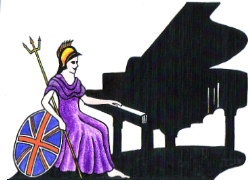Teachers, Accompanists and Piano Entertainers in the UK

UK Piano Page

Madbrook Farm
Warminster Road
Westbury, Wiltshire BA133RB
England
OVER 100 PIANOS IN STOCK ! Sales at our stores in
95 Strongbow Crescent
Eltham, London SE9 1DW
England
Piano Removals Services for all of Greater London
Upton Cottage
Plantation Farm
Blandford Forum, Dorset DT11 8BZ
England
Steinway restorations and retailers of pre loved
Kensington, London SW5
England
Kensington Piano removals and disposals operating
City of London, London SE13
England
Lewisham Piano Removals, Provide piano moving and
Music Festival for performers and guests Our 10th
18-06-2022 12:30PM
The Morecambe Bay Piano Group was set up to extend
11-12-2021 01:00PM
The Morecambe Bay Piano Group was set up to extend
08-01-2022 01:00PM
The Morecambe Bay Piano Group was set up to extend
12-02-2022 01:00PM
What is the difference between Overdamping and Underdamping?
Take the same elastic band and place your finger near the centre to stop it from vibrating this is underdamping, which of course is more efficient. Overdamping is controlled by gravity where as underdamping is controlled by adjustable springs so on the whole underdamping is far more efficient than overdamping. However, there is one disadvantage with underdamping. That is, if the dampers are incorrectly aligned to the nodes and antinodes of the vibrating string this will result in, the dampers when they come in contact with the string, emphasising certain harmonics on the piano, thus giving you a harmonic ring, this is more common on small uprights and small grandís as the margin of tolerance decreases as the piano becomes smaller.